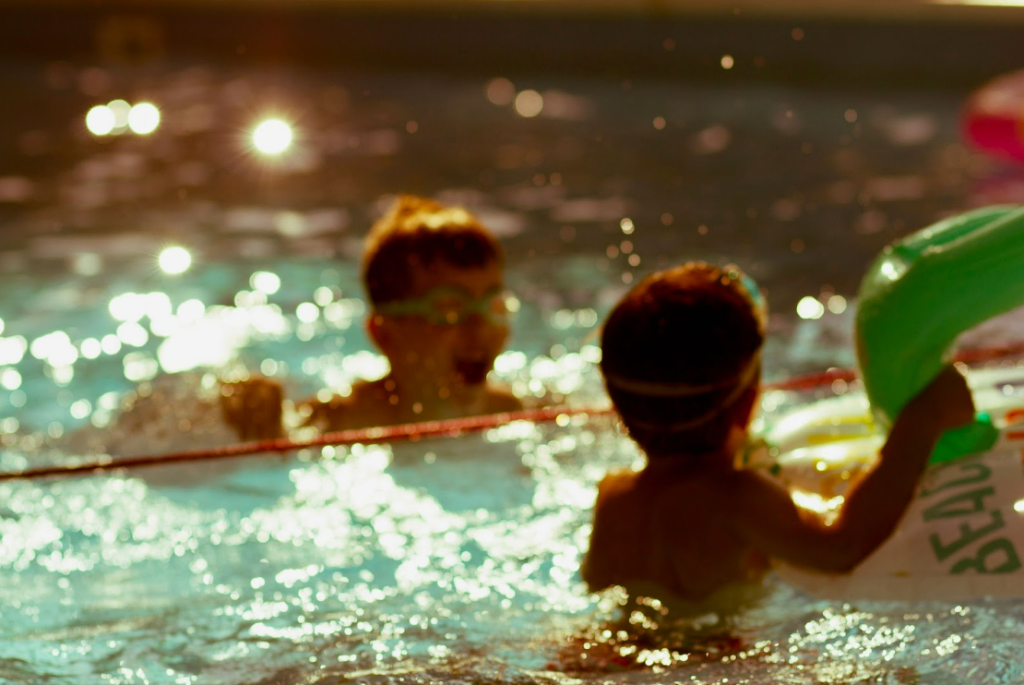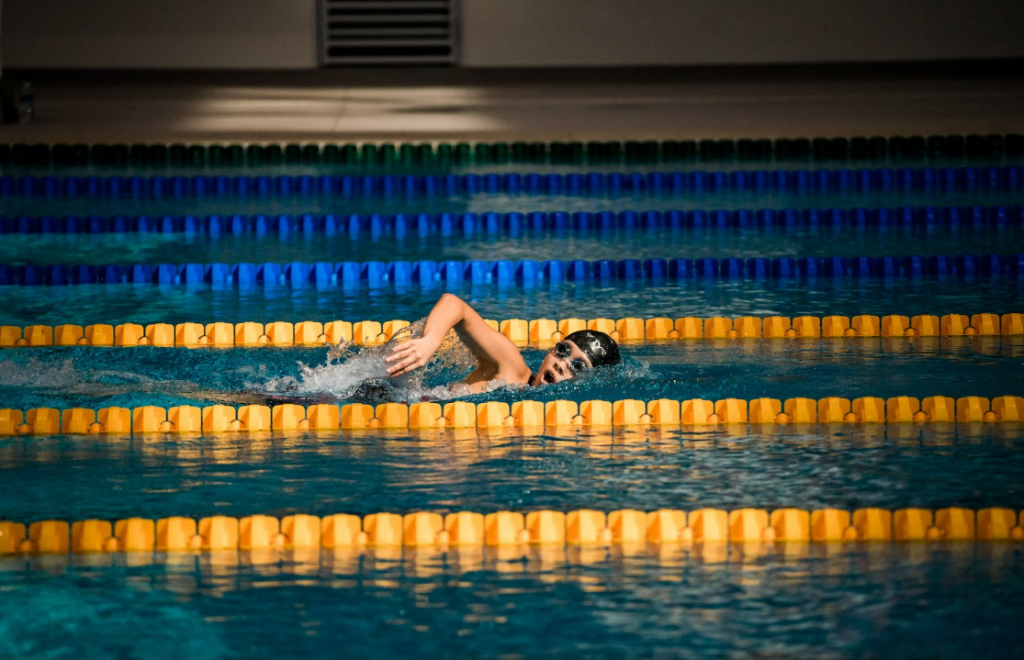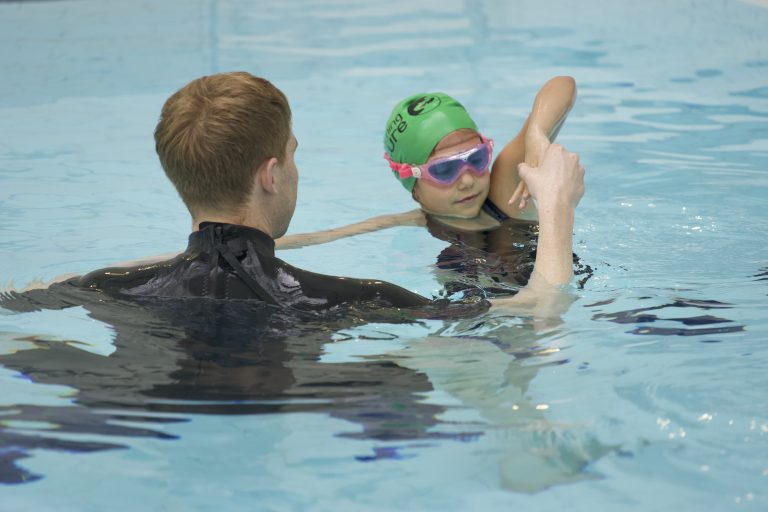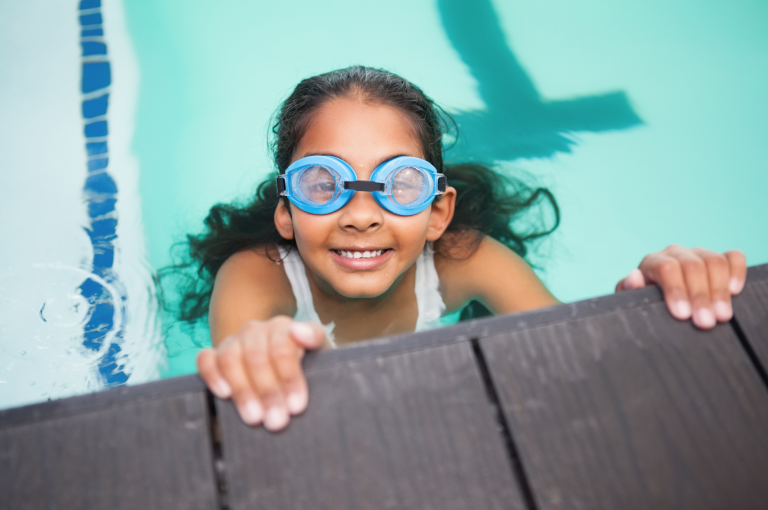Over the last few years, numerous stories have appeared across traditional and social media regarding swimming standards in Britain. Headlines often shriek over the number of people in the country who can’t swim, but we often fail to ask why – or dig into the more complicated reasons behind it.
Swimming is just one of many other forms of physical education on offer to the public, but it is the only one with potentially life-saving value. For this reason, dropping swimming abilities in the UK – for adults and children – is a real cause for concern.
How many people can’t swim in Britain?
According to recent statistics, roughly 1 in 3 adults in the UK cannot swim, meaning around 14.2 million can’t swim one length of a 25-metre pool.
The numbers for children are similar. Almost 1 in 3 children – around 2 million – leave primary education unable to swim. A figure that has jumped up from 1 in 4 children just last year. It’s predicted that without targeted intervention, that number could rise to 6 in 10 by 2025.
Is the situation improving or getting worse?
You’d be hard-pressed finding anybody who would tell you the situation is improving. While accurate statistics on swimming abilities through the years are hard to come by, most agree that a greater percentage of the population can’t swim now than in the past.
While swimming remains one of the most popular pastimes for physical education in the UK, fewer people are swimming now than in the past, and this can’t simply be blamed on the pandemic or the cost of living crisis. Between 2006 and 2016, there was a 23.7% drop in adult numbers swimming in the UK despite 564 new swimming pools opening during the same period.

Why are numbers dropping?
The million-pound question. The answer to this will vary depending on who you ask, and often, the contentious side of the debate does little to address the real problems. In reality, dropping numbers are down to various factors, some of which could be remedied with more attention and better funding, while others are much more ingrained and may take years, if not generations, to fix.
A Drop in Swimming Pool Funding
One area frequently cited for dropping numbers is a parallel drop in funding and the number of swimming pools open. Funding is a reason often used for a variety of complaints, but to talk about it in terms of swimming, we need to be careful.
Two-thirds of leisure centres in the UK are privately owned, with many operating on a contract to the local authority where they’re situated. This means that while we might assume they’re all given money by the government, that often isn’t the case.
One of the components of last spring’s budget was £63 million set aside for a one-off grant to help public leisure centres with heating bills and energy efficiency measures, but many of these businesses are not generally funded by the government.
Whether more public leisure centres should be subsidised by the government, particularly in low-income areas, is a question that deserves more attention. Still, we should be careful about blaming too much on a lack of funding.
Funding for Children & Socio-Economic Reasons
For the last few years, the government’s PE and School Sport Premium has been around £320 million, and while swimming and water safety don’t receive separate funding, they do receive a chunk of this money.
However, free swimming class is certainly not always a given. Schools are free to allocate their PE budget as they wish, and there have been an increasing number of schools where parents have been asked to subsidise their children’s swimming classes – either the classes themselves or transportation.
This immediately raises the question about socio-economic reasons for the delcine, and here, the differences can be painfully stark. Only 45% of children and young people attending school in the country’s most deprived areas can swim 25 metres compared to 76% in the least deprived areas. For Year 6 children, 25% cannot swim 25 metres unaided, while this figure is almost 50% in low-income families.
What’s clear is if you live in an affluent area and are classed as a middle-income family, you have a higher chance of being able to swim than if you live in a deprived area. Even if you can’t swim, you have a better chance of attending a school that can foot the bill for swimming costs, which have risen dramatically in recent years.

Swimming Pool Closures
Another reason often given for falling swimming numbers, often by newspapers, is the number of swimming pools that have closed in the last decade and the reasons why.
Since 2010, more than 400 swimming pools have closed in Britain, with deprived areas predictably taking more of a hit than affluent areas. The number of pools on local councils with the highest levels of health-related deprivation fell by 14% over the last 12 years, while those in the least health-deprived areas fell by 6%.
However, these statistics only tell part of the story. Many of the UK’s leisure centres were built during the 1960s and 1970s when spending was far less restrained than we see now, and many of them have seen precious little refurbishment since then. Nearly two-thirds of leisure centres in the UK need urgent investment, and there has been a growing fear that the industry could even collapse in the coming years.
Part of the problem here, which is frequently overlooked, is that while swimming pool numbers have been falling steadily since 2010, other industries have grown significantly. Cycling facilities, artificial football pitches, gyms, and fitness centres such as Crossfit have boomed in the same period, leading us to an awkward question – Is swimming simply an activity falling out of fashion?
Maybe, maybe not – it’s difficult to say. No sport or activity has a God-given right to remain popular, and it’s only natural that some fall behind. Swimming, however, perhaps should be an outlier because it’s the only activity mentioned here that should be deemed a vital safety precaution. Swimming doesn’t have to be the nation’s favourite pastime, but raising the current swimming numbers is paramount, if only to establish a base level of water safety.
Swimming Classes
Part of the inevitable assessment of swimming standards in the UK will need to focus not on infrastructure or funding but on the swimming classes themselves. Are we providing the right kind of lessons that maximise the number of children that leave them able to swim?
Swimming lessons are predominantly group classes. The Safety Training Awards recommends a ratio of 1:6 in group classes, but this can sometimes be over ten. The benefits of classes like this are obvious: affordability and a broad reach. With lower costs than private classes, more people, particularly those from a lower socio-economic background, can attend.
That’s undeniable, but what’s the point if children leave group swimming classes unable to swim? Private tuition, whether swimming, English, or music, will almost always produce a better outcome because of personalised attention. The downside of it, however, is equally apparent. A large slice of the population will never be able to afford private swimming classes, which creates a two-tiered system.
Some might argue that if group classes worked in the past, why can’t they work now? The problem with this thinking is that society has changed dramatically in recent decades, and the children of the 1950s are entirely different from those of the 21st Century. The reason for this is so complex we won’t even dive in (pun intended), but the point is that we can’t simply compare ourselves now to how we were in the past. We need to find a way of teaching swimming that fits in the modern age – one where the number of children who can actually swim at the end of it is significantly higher.

Social & Cultural
While it’s relatively easy to look at statistics and budgets, discussing social and cultural reasons for dropping numbers is far more complex.
When we break numbers down by race and ethnicity, it’s clear that the colour of your skin determines how likely you are to be able to swim. Within the black community, 95% of adults and 80% of children don’t swim – within Asian communities, those figures are 93% and 78%, respectively.
There are numerous potential reasons for these skewed statistics. Poverty, lack of inclusion, lack of suitable role models, in-grained cultural differences and fears – often projected into individual aquaphobia – prejudice, and stereotyping.
Talking about some of these issues can quickly become diverse, but they must be addressed if we’re serious about raising the overall swimming standards across Britain.
From both the inside and out, swimming has long been a white sport. It’s more popular among white people; most of the most famous swimmers are white, and the idea of educating children how to swim from an early age has long been ingrained in Britain, which remains predominantly white.
This is a situation that is mirrored around the world. In northern and western Europe, 89% of men and 85% of women can swim, but globally those figures are 57% and 32%. There are some areas of the world where female swimming statistics dip below 20%.
This clearly needs to change, but how to do it is unclear. In Britain, with its rich multicultural fabric, change needs to come from both a governmental level, through media campaigns and funding, and at the community level, where minority-ethnic groups are encouraged to swim in environments they feel comfortable in. Assuming one solution fits all completely misses the point that we live in a gloriously diverse country with people drawn from all corners of the world with vastly differing ideas about swimming and water.
What can be done to raise swimming numbers?
Raising swimming numbers in the UK is not going to happen overnight. There is no quick fix, and it’s not immediately clear what the fastest way to achieve this would be. Most likely, it would need a multi-pronged approach involving financing, government initiatives, and advertising campaigns, along with a general desire for people to learn to swim – a factor that is probably the hardest to address.
Extra financing is always a popular rallying call, and the industry could certainly do with it – but where would that extra money go? More leisure centres? More classes – group or private? You could use it to drive down prices to make swimming a more attractive proposition to the consumer.
One point we haven’t covered but would undoubtedly make a difference is the VAT attached to swimming classes. Most goods and services in the UK come with a 20% surcharge, but should an activity that mostly certainly saves lives be subjected to this charge? Making swimming classes exempt from VAT would aid schools and individuals, meaning more availability and more people in the pools.
However, as we’ve seen, it’s not necessarily a numbers game. More group classes will certainly raise swimming numbers, but probably not as much as we might think. Perhaps it’s time to consider having short bursts of private classes, maybe even aided through government schemes, to help children and adults learn the basics before going into larger classes.
The social and cultural tentacles around swimming are far harder to unwrap and could take generations to address. However we do it, we do make swimming an activity that is both open and accessible to all, regardless of socio-economic status, race, or ethnicity. We need to talk more about ingrained fears that are past down from generation to generation and how we can break these cycles. Swimming numbers are dropping sharply, and to halt the slide, we’re going to need to approach things differently.

 LOG IN
LOG IN
 CONTACT US
CONTACT US








